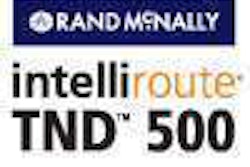‘Clash for clunkers’ isn’t just for cars
Most trucks lead hard lives. Or rather, most trucks led hard lives until truly luxurious, high-end pickups and SUVs appeared on the market in the late ’80s and early ’90s. One day, it’s conceivable that some of the light trucks used today by soccer moms and lawyers to run the kids to the mall and pick up groceries will wind up as collector’s items – a reminder of the last gasp of the American gas-guzzler. For some reason, owning a truck seemed to give people a sort of internal justification for driving large vehicles they didn’t need or use to their full potential.
Of course, for many people, driving trucks usually isn’t luxurious. Peel away the flashy – and expensive – options most manufacturers add onto their trucks today, and you find a dedicated frame and powertrain designed to spend many years doing extremely hard work.
It’s fair to say Americans perfected the light-duty truck. Other manufacturers from other companies have tried repeatedly to carve out a piece of this action for themselves – but let’s be honest: How often do you see a hard-used compact or import truck or van more than 10 years old slaving away in a tough commercial application? I’m not saying they’re not out there. But they’re rare.
In contrast, there are plenty of battered old Fords, Dodges and Chevys still on the job. That’s the beauty of a good truck: It keeps getting the job done long after the note’s been paid off and the paint has faded away. Still, nothing lasts forever. Old trucks eventually die, or they get so unsafe and expensive to operate that they’re put out to pasture.
Now, thanks to a new government program, those faithful old junkers can perform one last, valuable service for you or your business. The government has enacted a new program called the Car Allowance Rebate System (www.cars.gov) – known more popularly as the “cash for clunkers” program.
The goal of the program is simple: get older vehicles with poor fuel economy and poor emissions performance off the road, and replace them with newer, cleaner and more fuel-efficient models.
Like any good government program, there are all sorts of rules pertaining to cars, light trucks and work trucks – along with various categories for each vehicle type – to confuse things further. But the basics are as follows:
·The program applies only to trucks built before 2001.
·Eligible trucks may be no more than 25 years old.
·SUVs do not qualify for this program.
·Light-duty trucks that get at least 2 mph more, but less than 5 mph more, than the vehicle they are replacing are eligible for a $3,500 rebate.
·Light-duty trucks that get 5 mpg more than the vehicle they are replacing are eligible for a $4,500 rebate.
·Work trucks without government fuel economy ratings manufactured before 2001, but no more than 25 years old, are eligible for a $3,500 rebate.
·The CARS act requires the dealer credit your rebate in addition to any existing manufacturer rebates or discounts, and you can combine any CARS rebate with other state or federal incentive plans, such as the current hybrid vehicle credit.
·Dealers are expressly forbidden from charging a fee for purchasing a vehicle using the CARS program.
·You only can use the credit one time, for one vehicle.
If you plan to take advantage of the CARS program, you’ll need to bring documentation establishing the identity of the person who currently owns the vehicle, preferably the title of the vehicle, and proof that the vehicle has been insured continuously consistent with applicable state law and registered to the same owner for a period of not less than one year immediately prior to the trade-in, although this criteria will be finalized later.
You may love your old pickup, but now might be just the time to squeeze out that last bit of value and send it off to a well-deserved retirement.











